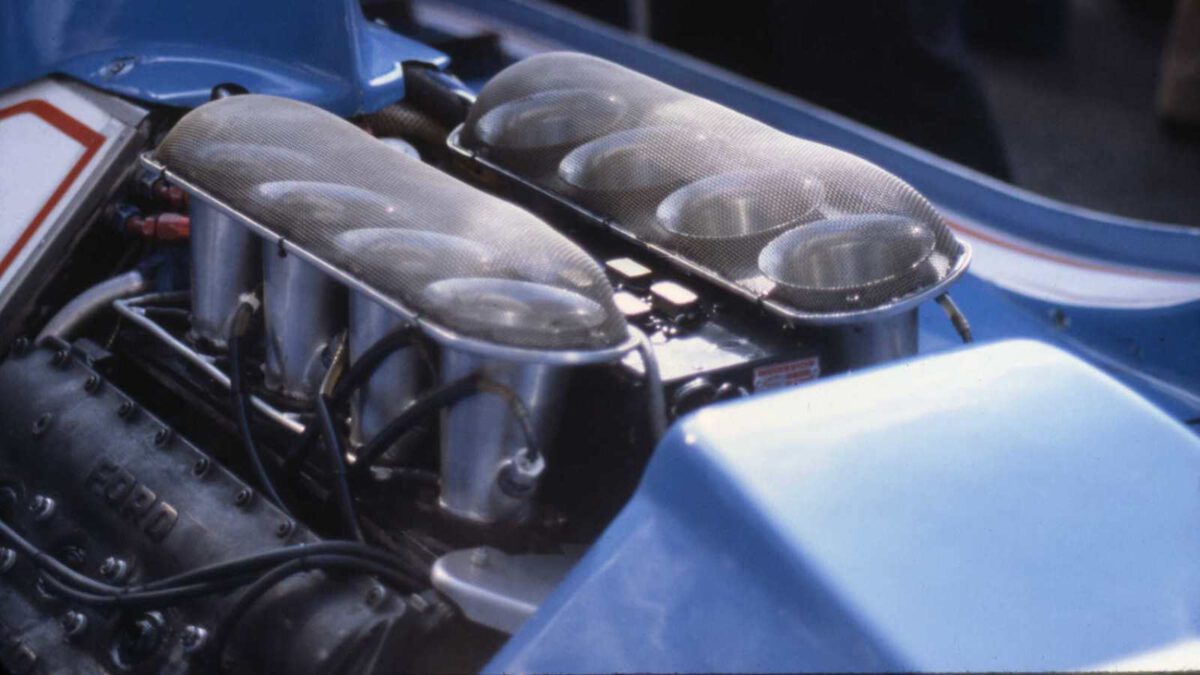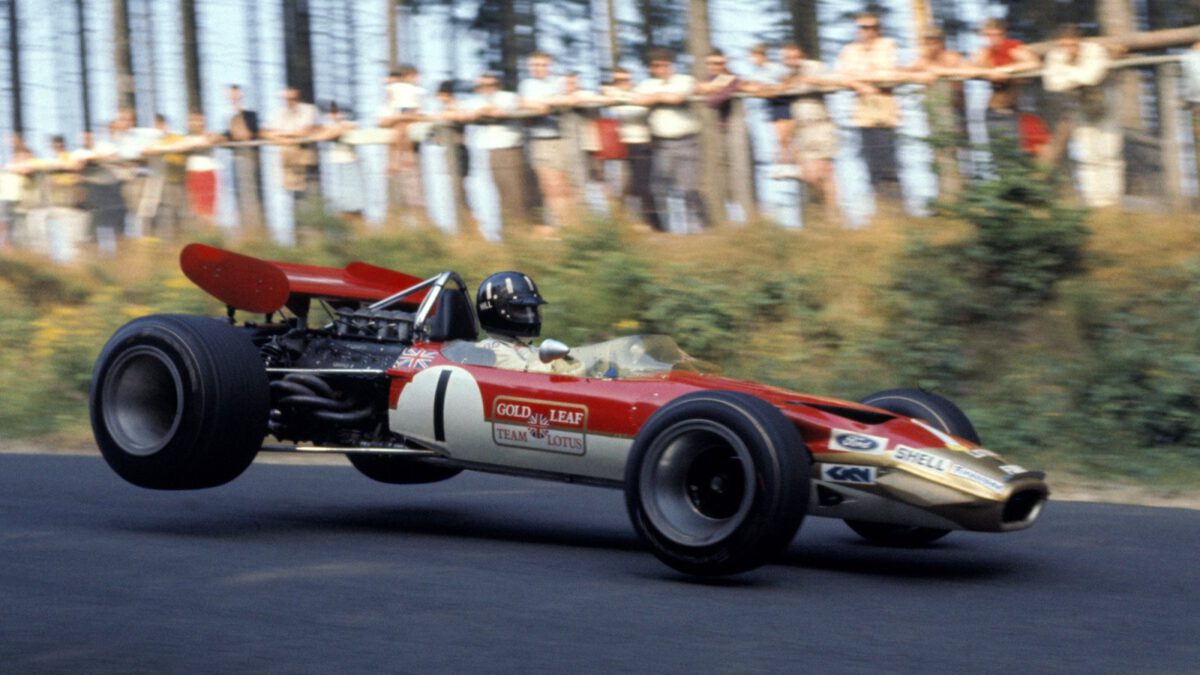Which is the best decade of Formula One? This is a question to which there is no satisfactory answer. Everyone has their favourite. Whether it was the romantic beginnings in the 1950s, the insane turbo era of the 1980s, the peak of atmospheric ten-cylinders at the turn of the millennium, or today’s hybrid era, it’s simply impossible to choose a single best one.
Each period has its own unique charm, but one does stand out a bit. A period that some nostalgically remember as the classic era of Formula One – the 1960s.
We tend to romanticise the Formula One of the 1960s. We imagine valiant knights in armour not only battling their opponents on the track, but also taming their elegant but fierce machines.
Cigars, as the still wingless single-seaters of the time were called, only raced on natural racetracks with zero security, which were often visited by death, and cigarettes were not only a must-have accessory for every playboy with a half-unzipped jumpsuit, but the driving force of the business.
The sixties were simply magic. Not only because of how we imagine them today. It was also a very turbulent period, full of experiments and technical innovations that have continued to this day.

Lightweight construction and materials
It’s only been a few years since the introduction of perhaps the greatest revolution in the history of motorsport’s queen – the front-mounted engine – a configuration still used by F1 cars today, when in 1962 the Lotus team began experimenting with an aluminium monocoque instead of the traditional tubular frame.
It was, after all, the genius among engineers himself, Colin Chapman, who theorised that adding power might give you speed on the straights, but adding lightness would give you speed everywhere else. Finding ways to lighten the design became almost a fetish of his, which resulted in several failures of excessively fragile machines.
1966 was a pivotal year with the advent of the first composite materials, but this technology had to wait until the 1990s and the first carbon fibre composites, which were a real revolution in the field of lightening and strengthening the structure of racing single-seaters.

Legendary engine
The 1966 season was also marked by the return of the bulkier power units that the sport’s organisers had deliberately downsized in the 1950s to slow down the single-seaters and achieve greater safety. Atmospheric engines had a new 3.0 litre displacement limit, while supercharged units could have 1.5 litres.
The legendary DFV V8 engine from Cosworth revolutionised powertrain design. In 1967, it made its first appearance in the bowels of the equally legendary Lotus 49 and thus began its dominance for the next decade.
It was not only its light, compact and durable construction with eight cylinders, four DOHC valves and unrivalled power, initially around 400 hp, that was crucial, but above all the overall incorporation of the engine and gearbox as the main load-bearing part of the structure, which carries the cockpit and suspension. This idea, first introduced by the Lancia D50 in 1954, was further refined by Colin Chapman.

Sponsors’ money
One of the biggest drivers of the Formula One carousel is money. They drive technological development. Today, F1 is a multi-billion dollar business, but there was a time when stable owners and drivers had to earn their entertainment on the side.
The revolution in this field was brought about by the arrival of rich sponsors, mainly from the tobacco and oil companies. The first ever stable to take to the grid with an advertisement was the private South African team Gunston, which entered a Brabham car in the Gunston cigarette livery for the 1968 home Grand Prix.
At the very next Spanish Grand Prix, the first Lotus factory team took up the idea, wearing the red, gold and white colours of Imperial Tobacco’s Gold Leaf cigarettes. And thus began a new era in which the money of rich sponsors played a major role. We have discussed this topic in more detail in a previous article.

Spoilers
Another great innovation of the 1960s was the spoiler. Engineers’ tinkering with aerodynamics can be traced back to the 1930s, but these were more for the purpose of efficient airflow and reduced drag.
It was not until the Chaparral 2F sports prototype that the idea of the inverted wing was realised. If a wing profile on an airplane can generate lift that lifts it into the sky, an inverted wing could generate downforce that would give a race car grip without adding weight, even at the cost of increased air resistance.
Again, it was none other than Colin Chapman who first introduced subtle front and rear wings on the Lotus 49B for the 1968 Monaco Grand Prix. The teams Brabham, Ferrari and Matra followed right after. By the end of the season, practically everyone was using the spoilers.
As with any revolutionary innovation, this one was soon to be banned. In 1969, the International Automobile Federation (FIA) banned spoilers after both Lotus cars crashed at the Spanish Grand Prix, when the wings broke off due to overstressed construction. The ban didn’t last long, however, and by the end of the season the FIA once again allowed the use of spoilers, albeit at the cost of greater regulation in terms of size and placement.

All-wheel drive
The 1969 season also brought a brief revival of the four-wheel drive idea, with as many as four teams flirting with it. The only one who managed to bring the idea to fruition was the Matra team, which scored one point for sixth place in the Canadian Grand Prix with the MS84. However, the front gearbox was disconnected on the car, so the single-seater was technically a rear-wheel drive car, although it carried the entire all-wheel drive system with it.
The idea was eventually dismissed as too technically complicated, bringing high structural weight at the cost of little benefit. Spoilers and wide tires seemed to be the better way to go for more grip, and with the advent of the 1970 season, Goodyear first introduced slick racing tyres.
Fighting for more safety
The late 1960s were also marked by a fight for greater safety for racing drivers, which was only heightened by the tragic crash of double World Champion Jim Clark, considered by experts to be the best British driver of all time, in a Formula 2 race.
The main promoter of safety was Jackie Stewart, the three-time Formula One world champion, who introduced, among other things, the use of flame-retardant overalls and lobbied for greater safety on race circuits, which still bore the marks of county roads with straw bales on the shoulders rather than the modern racetracks with safety zones we know today.

This even led to a boycott of the Belgian Grand Prix at Spa-Francorchamps, at that time still a 14-km-long natural circuit. The pilots refused to enter the race until the required safety measures were in place on the circuit. The legendary German Nürburgring, nicknamed the Green Hell by Jackie Stewart himself, has also been the subject of much criticism for its lack of safety.
An equally important innovation in the field of safety was the introduction of the integral safety helmet, first worn by Dan Gurney at the 1968 German Grand Prix. Until then, it was common to wear an open racing helmet with leather goggles, which of course did not provide much protection for the rider’s head. But it did enable smoking cigarettes.
And so slowly the fascinating era of the 1960s came to an end, followed by the equally exciting 1970s.
First-hand
Would you like to return to this time for a while? No problem, now you can experience it for yourself.
Ricard & Bonette can make this boyhood dream come true. From 2023, it will offer a unique experience in its portfolio – rides in a historic Formula 1. In addition to the more modern F1 single-seaters from the turn of the millennium, you can also try out traditional single-seaters from the 1960s.
At the famous French racing circuit Charade, which is still reminiscent of the golden 60s and breathes an incredibly strong atmosphere, you will be able to try out the original F1 Ford Crosslé 90F as part of a half-day, full-day or two-day training course.
At least for a moment you will feel like Jim Clark, Jackie Stewart or Graham Hill. This is true time travel!
